Jesus Christ
A Great Master. The founder of Christianity.
Time and place of birth. Family. Early childhood.
The parents of Jesus, Mary and Joseph the carpenter, lived in Galilee, a small village of Nazareth. They both came from the family of David. Due to the population census that took place at that time, they went to Judaea, where their family had originated. Here, in Judaea, in Bethlehem, which is south of Jerusalem, Jesus was born[1].
The date of birth seems to be obvious, since a new age began from the birth of Christ. However, that date was suggested by monk Dionysius 600 years later. It was accepted despite the obvious discrepancy that king Herod was still alive at the time when Christ was born.
New testaments do not provide Jesus’s date of birth. The Gospel of Matthew describes the unusual circumstances that accompanied the birth of the Holy Spirit. “After Jesus was born in Bethlehem in Judea, during the time of King Herod, Magi[2] from the East came to Jerusalem and asked, ‘Where is the one who has been born king of the Jews? We saw his star when it rose and have come to worship him’ ” (New International Version, Matthew 2:1-7). The Magi brought baby Jesus valuable gifts — gold, frankincense and myrrh — which in ancient times were usually gifted to kings and other important people as a token of special reverence.
For a long time, the magicians had predicted that when planets Saturn and Jupiter come into a special conjunction, an Avatar (a Divine Incarnation) should be born. The Star that led the Magi occurred during that conjunction of planets. It appeared in Pisces which is known to astrologists to govern Judaea. That is why the Magi departed to Judaea, and their journey lasted for about one year.
In 1604, a prominent German astronomer, Johannes Kepler, was the first person to calculate the date of the conjunction of these planets — 7 B.C. In 1925, Chaldean astronomic tables about the conjunction of planets Saturn and Jupiter in Pisces were deciphered. That conjunction had been carefully observed by Babylonian astronomers during a period of six months. The scientists determined the date of their observations to be 7 B.C. The Bible Encyclopedia (chapter “Herod”) states that Jesus was born in the “thirty third year of Herod’s reign,” which is 7 B.C.
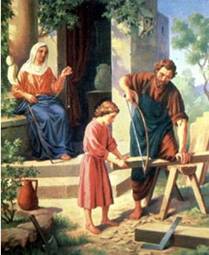
Jesus’s Parents. Early years. Jesus called his father the best of the fathers. He was a great soul[3], the keeper of Jesus and Mary. Jesus’s first teacher was his mother, whose pure heart and the devotion to the Divinity allowed for the Holy Spirit to be embodied. He learned from his mother that “the Word of God is saved by His prophets.” During Sukkot, a seven-lamp menorah was lit in his parent’s house and sacred stories were read. According to the legends, Jesus showed an interest in learning Jewish sacred scriptures from the age of five. Later, he exceeded his classmates in studying. He often caused dissatisfaction in his teachers, who blindly followed the words in the text while Jesus was striving to comprehend the meaning and spirit of the scriptures.
Nazareth, where Jesus’s family lived, was located along the route of many caravans. Travelers who had been to many countries, especially those who had the knowledge, attracted the child. He spoke with them, absorbed their teachings and often surprised them with his deep perception of sacred knowledge. Some of them stayed in Nazareth longer in order expand the mystic knowledge of this unusual child.
At the age of thirteen, during Passover, young Jesus got “in the center of the most prominent scientists and teaches of the Law of Israel…It was unheard of for an adolescent to speak freely in the presence of old masters, and it was wondrous that he took the liberty of objecting, speculating, and teaching in such an environment!” “The legends say that after Jesus’s talk at the temple and after his parents found him, the members of a secret organization of magicians addressed the parents. The parents had finally agreed and the wise men took Jesus to their residence in order to give him education that would be suitable for the aspirations of His soul and His mind.” (Yogi Ramacharaka. “The Life of Jesus Christ.”)
According to another legend, soon after that talk with the wise men at the temple, the parents sent their son to a deserted area of southern Judea (near the shores of the Dead Sea) to study in the community of the Essenes. At the age of 19, Jesus was accepted into an Essene monastery which was the concentration of the mystical science; it had a wonderful library of occult books, and hosted travelers from Iran and India on their way to Egypt. After learning the secret doctrine of Essenes, Jesus left for Egypt. “For Egypt was one of the world centers, where true mysteries were kept….that is where young Jesus received the highest Initiation that prepared Him for the Royal priesthood.” (Annie Besant.)
There are stories in the legends of Iran, India, and Tibet about a young master, Issa, who had once visited them and who studied their teachings and secret knowledge. The Brahmans and Buddhists have stories about the sermons of the young master directed against caste limitations that had caused rebellions of priests against him. For them, He was a dangerous rebel. Jesus-Issa always objected to the mischief-making and hypocrisy of the clergy, and He strived to return the people to the genuine spirit.
L. Dmitrieva, referencing the book “The Brotherhood of Graal” by Richard Rudzitis, says that “Christ (The Great Pilgrim) was in the Himalayas, in Shamballa, in the Great White Brotherhood, and spent three years there (L. Dmitrieva, The Secret Doctrine of H. Blavatsky, Part 3). In the same book she writes “the Tibetan Bible retells the life of saint ‘Issa — the best of human sons.’ This manuscript (the Tibetan Bible) was found in one of the Tibetan monasteries by the Russian scholar N. Notovich.”
It is said that Jesus returned to Judea and began his Great Service after thirty years of travel, when he was already of a mature age.
The Great Service
Jesus began His Great Service — teaching the truth to the people of Israel — with baptism received from John. Why is this so? Perhaps, the answer lies in the legend that says that after His return to the Motherland, Jesus lived with the Essenes for about a year. The Essenes lived in a closed community near the Dead Sea. That is where He learned about the priesthood of John and made an intention to go to the place where he served, which was close to the Dead Sea, at the shore of the Jordan River. The Essene wise men notified John that a great Master would come to him, and that he should prepare the people for his appearance. Many people asked John about whether he was the Christ, and John would say that he was only preparing the path for the Lord. “I baptize you with water for repentance. But after me comes one who is more powerful than I, whose sandals I am not worthy to carry. He will baptize you with the Holy Spirit and fire.” (Matthew 3:11). Thus, Jesus’s task was clearly outlined: to open the eyes of the people to the spiritual, the divine plan; to carry the fire of love and wisdom to the people.
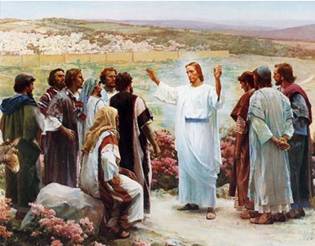
For three years the Master and his disciples were constantly travelling, often crossing Palestine from South to North and back. From the place of baptism in the Jordan River, He went north, to Galilea, and from there he went south, all the way across the country to Jerusalem to celebrate the first Holy Passover after His return from His journey. Jesus went to the temple along with his disciples. He saw how relentlessly the lambs were killed for sacrifice right inside the temple, demonstrating all the hypocrisy of the heartless ceremony. He saw herds of cattle and sheep, bargainers and merchants right in the temple. After seeing this blasphemy, “he made a whip out of cords, and drove all from the temple courts, both sheep and cattle. To those who sold doves he said, ‘Get these out of here! Stop turning my Father’s house into a market!’ ” (John 2:15-16). The clergy could not forgive Jesus for His forcible assertion of righteousness.
The following months were again spent travelling across Judaea, Samaria, and Galilea. Everywhere He went, Jesus founded groups of disciples, mostly from the poor and disadvantaged. When he found out about the death of John the Baptist, Jesus went to the desert to think about the work that was ahead of Him: John’s work was awaiting Him. While before He was a quiet teacher of the few, now He spoke in front of crowds of people as a “passionate preacher and speaker…and many educated people came to listen to…His calls to truthfulness, virtuous living and contemplation.” (Yogi Ramacharaka. “The Life of Jesus Christ.”)
According to legend, when Jesus was visiting Nazareth, He went to a local synagogue. Due to his birth and education, He could lead a Jewish service and give sermons as a rabbi, or a clergy member. He began His sermon from the text of the prophet Isaiah: “The Spirit of the Lord GOD is upon me, because the LORD has anointed me to proclaim good news to the poor. He has sent me to bind up the brokenhearted.” (Isaiah 61:1). “Today the Holy Scripture is becoming reality in front of you,” Jesus proclaimed to the amazed Nazareans, and He began to say that He had come to bear the Truth; he called to the achievements of the spirit, exposed the formalism of the clergy and condemned the mercantile ceremonies. The enraged crowd dragged Jesus across the city streets. He did not resist. Only when they brought Him close to a cliff drop, he peacefully went through the crowd, as His time had not come yet. That is when Jesus said His famous phrase: “A prophet is not without honor, except in his hometown and among his relatives and in his own household.” Jesus had to leave his hometown, Nazareth, together with His mother and disciples and get settled in Capernaum.
In Capernaum, Jesus began to turn the group of His disciples into a labor organization and gradually teach them the knowledge that He had Himself. “There was a lot of astonishment among disciples when He wanted to work together with them, in order to earn the food…Several of the most zealous disciples turned away exactly because of such constant labor” (Supermundane, Part I, 155, Russian version).
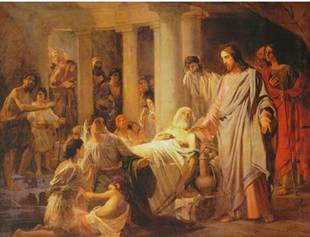
This is when the stream of His amazing wonders and healings began. He healed the son of a courtier from a distance, He healed with a touch, or the powerful words “heal” or “rise and go.” He healed the blind and the disabled, those with paralysis or leprosy, those who were possessed or mentally ill. He brought the dead back to life, filled fishermen’s nets with fish; and He created fish and bread to feed thousands of hungry people who had come to listen to Him. He walked on the water and pacified the hurricane. He used all of His occult knowledge about the mysteries of nature and the human spirit for the people. He did not take for Himself; He gave generously, in spite of distrust of the crowds, intolerance of the Pharisees, opposition of the doctors and the clergy. So went the Great Pilgrim across the country. “Jesus went throughout all the towns and villages, teaching in their synagogues, proclaiming the good news of the kingdom and healing every disease and sickness.” (Matthew 9:35).
The following section is taken from the book Supermundane, Part I, 151-152:
“…every Great Teacher is associated with healing and the arts.” The Great Pilgrim[4] was especially prominent in these qualities. “There was much healing, mainly of two kinds, when people came to Him, or when He Himself would touch a person because He saw the onset of an illness. Often the ailing one did not understand why the Stranger had touched him. Such an act represented true generosity on the part of the Great Spirit, who, like a tireless gardener, sowed such seeds of goodness.”
“His words about Beauty also do not appear often in the Apocrypha. The Teacher drew people's attention to beautiful flowers and to the radiance of the sun. He also encouraged group singing, for it is the most powerful method of achieving harmonious vibrations. The Teacher did not emphasize this specific aspect of music and singing, but simply advocated joy and inspiration.”
“There were those among the disciples and followers whose lives were filled with misery and daily hardship. The Teacher would first help them by uplifting their spirits, and only when balance was established would He discuss their problems. He never condemned their past, but led them into the future. The Teacher could clearly see the future, but only revealed it according to the consciousness of His disciples. Nor did He hesitate to use severe words to revive the dead consciousness.”
“Thus the Healer and Creator proceeded on His Way.”
“He did not avoid mingling with people. He visited their festivals and discussed their daily needs, but few noticed the many wise warnings that were given with a beautiful smile and words of encouragement. His intimate tenderness was not always appreciated by the disciples, who sometimes even criticized Him for it, believing that He should not have given so much attention to people of no importance. However, wonderful souls were revealed and made manifest by His smiles. He was criticized for talking to women, yet it was women who preserved the Teaching. He was also criticized for association with so-called heathens by those who forgot that the Teacher came to all people, not just to one sect. It was part of His lofty achievements to accept insults with equanimity.”
“We mention these condemnations because through them the Image of the Great Pilgrim is shown to be more human. If He had not come into contact with life and had not suffered, His deeds would not have been as great. No one realized how tormented He was by the many disturbed auras He came into contact with in this way, but the thought of great achievement never left Him. The condemnation that He heard also contributed to the bearing of the achievement. “Thus the Great Teacher followed His ardent Path.”
During the days of the third Passover, Jesus solemnly entered Jerusalem together with his disciples, greeted by the people, while the Sanhedrin was already preparing a reprisal for Him. Based on Judas’s accusation, Jesus was arrested and brought in front of the Council. The hearing, held at night, with members absent and court rules violated, found Jesus to be a dangerous rebel. Demanding a death penalty, the priests brought Jesus to Pilate, and then to Herod Antipas, and back to Pilate. Not seeing Jesus’s guilt, Pilate was trying to change the death penalty to a ruthless flagellation and release of the prisoner in honor of the holiday, but the priests and the people whom they provoked demanded crucifixion. Jesus was crucified next to two villains.
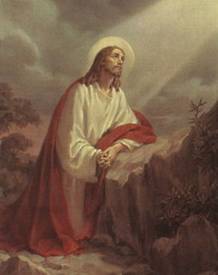 Jesus’s Prayer Jesus’s Prayer
Christ gave His disciples only one prayer. “In this prayer, he enclosed an ancient teaching that had existed long before Him and that He had received by tradition…all the Teaching that he had learned, He wished to enclose in the prayer ‘Our Father,’ hoping that people would plant that seed in their soul…would cultivate it, in order to grow a wonderful tree of the Initiation Science which he had left us.” (Omraam Mikhaël Aïvanhov, “The True Meaning of Christ’s Teaching.”)
“Our Father, who art in heaven, hallowed be thy Name, thy kingdom come, thy will be done, on earth as it is in heaven. Give us this day our daily bread; and forgive us our trespasses, as we forgive those who trespass against us, and lead us not into temptation, but deliver us from evil. For thine is the kingdom, and the power, and the glory, forever. Amen.” (Matthew 6:9-13).
Christ’s Sacred Teaching
“The Great Pilgrim advocated the broadening of consciousness, and repeatedly taught, ‘Open your eyes and ears.’ Certainly, He did not invite people to open their eyes and ears only to His particular Teachings, but meant that only the expansion of consciousness leads to profound realization. But, alas, one cannot thread a needle with a rope, and a great message cannot penetrate a small ear. One can imagine how much of His Teaching never reached the consciousness of His listeners.” (Supermundane, Part I, 176).
All ancient Eastern religions had two teachings: one was the secret, sacred teaching for the disciples, and the other teaching was for the “outsiders” those whose consciousness was not ready to take in the sacred knowledge. There are many references, including those in the Gospel, of the Mystery Teachings of Jesus, or Mystery Teachings of the Kingdom. Christ clearly talks about it to His disciples: “The secret of the kingdom of God has been given to you. But to those on the outside everything is said in parables.” (Mark 4:11). In ancient scriptures, the Initiated ones were referred to as the Advanced and the Wise. The so-called first initiation was from the water and the Spirit. Jesus says to Pharisee Nicodemus: “Very truly I tell you, no one can enter the kingdom of God unless they are born of water and the Spirit. Flesh gives birth to flesh, but the Spirit gives birth to spirit.” (John 3:5-6). The next initiation was from the Holy Spirit and the Fire. John the Baptist was preaching: “I baptize you with water for repentance, but he who is coming after me <…> will baptize you with the Holy Spirit and fire” (Matthew 3:11).
“Enter through the narrow gate. For wide is the gate and broad is the road that leads to destruction, and many enter through it. But small is the gate and narrow the road that leads to life, and only a few find it.” (Matthew 7:13, 14). This is the highest occult Teaching. “The narrow gate” was the gate of the Initiation, and through it the initiate came to the Holy Kingdom. However, only few can enter that gate, and only those whose efforts are directed at constant perfection, and whose life is directed at giving to people. One can consider this perspective when analyzing Jesus’s words to His disciples “you are gods” (John 10:34) and his call: “You therefore must be perfect, as your heavenly Father is perfect” (Matthew 5:48).
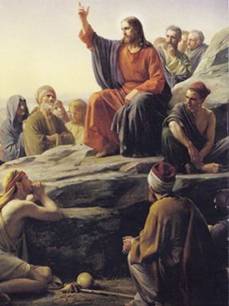
Jesus taught His disciples to live and act in such a way so that people would notice their spiritual light and comprehend it: “You are the light of the world <…> let your light shine before others, so that they may see your good deeds and give glory to your Father in heaven” (Matthew 5:14, 16). “You are the salt of the earth” (Matthew 5:13). The function of the salt is to give flavor to the food; the duty of the Initiated is to give a spiritual taste to mankind.
The disciples received the sacred knowledge directly from the Great Master, and that awakened in them their hidden natural powers. During the second year of instruction, He could send His chosen ones to preach and help the needy in health, giving them the directive: “You received without paying; give without pay,” “be wise as serpents and innocent as doves” (Matthew 10:8, 16).
The Master knew that His death was nearing and was preparing His disciples for Service, sending them into different towns of the country. “He entrusted his disciples to take…magnets (the objects that were close to the Great Pilgrim) to far away countries. One must remember how far His heralds went. People did not know them, but they still felt the importance of such messengers and hated them, as people hate everything that is incomprehensible.” (Supermundane, Book I, 155, Russian version).
“…the Great Pilgrim could direct people to the Highest just by His glance. The Teacher used to say, ‘Friends, you find ample time for everything, but for the Highest you have only a few moments. If you had dedicated only the time you waste in the dining-hall to the Highest, you would have become teachers by now!’ Thus, in practical terms, He taught the advantage of elevated thinking.” (Supermundane, Book I, 156).
Christ affirmed the indefeasible Law of reincarnation with his words: “… a hundredfold now in this time, houses and brothers and sisters and mothers and children and lands, along with persecutions, and in the age to come eternal life. But many who are first will be last, and the last first.” (Mark 10:30-31). Other words from the fourth Gospel also illustrate the law of reincarnation: “So the Jews said to him, ‘You are not yet fifty years old, and you have seen Abraham?’ Jesus said to them, ‘Very truly, I say to you, before Abraham was born, I am!’ ” (John 8:57-58).
Knowing the Law of Karma, Jesus taught the responsibility for one’s deeds. “I tell you, on the day of judgment everyone will have to give account for every careless word they have spoken.” (Matthew 12:36). “First be reconciled to your brother, and then come and offer your gift. Settle matters quickly with your accuser while you are going with him to court.” (Matthew 5:24-25). “…whatever you bind on earth will be bound in heaven, and whatever you loose on earth will be loosed in heaven.” (Matthew 16:19).
Being an Initiated one, the Master knew that the cosmic Law of Karma, or the Law of Retribution, gives back to people not only based on their deeds, but also based on their desires and thoughts; that is why even a lustful look at a woman must be punished. One cannot avoid the punishment. If there are no visible witnesses, there is an invisible witness — the Law of Karma. “There is nothing concealed that will not be disclosed, or hidden that will not be known.” (Luke 12:2). Knowing the power of thought, Christ warned his contemporaries to act and think justly. “Knowing their thoughts, Jesus said, ‘Why do you entertain evil thoughts in your hearts?’ ” (Matthew 9:4). “So in everything, do to others what you would have them do to you, for this sums up the Law and the Prophets.” (Matthew 7:12).
“The Teacher also said, ‘Beware of negative thoughts. They will turn against you and will burden you like an abominable leprosy. But good thoughts rise upward and will lift you with them. You must know the power of the healing light and deadly darkness that man carries within himself.’ ”
“He also said, ‘You are used to fearing death because you were not taught about the passing into a better World.’ ”
“And He also said, ‘You must realize that good friends will continue to work together there, just as here.’ Thus the Great Pilgrim continued teaching about the eternal values and the power of thought, but His Teachings were comprehended by only a few.” (Supermundane, Book I, 160)
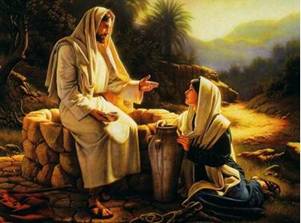
Even in the Gospels that had been distorted in later additions, Christ’s assertions of the Divine Feminine have been preserved. In the fallen woman Mary Magdalene, He sees not a sinner but a heart that deeply feels the Love to the Master, and later becomes a devoted disciple. Among the people who were the closest to Him, there were women that are also mentioned in the Gospels. One of His commandments, just as those of other Great Wisemen, is to honor your father and your mother. “For God commanded, ‘Honor your father and your mother,’ and, ‘Whoever reviles their father or mother must surely die.’ ” (Matthew 15:4).
The Great Master loved children and allowed them close to Him, as he saw in them the advancement of mankind: “Let the little children come to me and do not hinder them, for the kingdom of heaven belongs to such as these.” (Matthew 19:13-14).
Christ’s Mission
Christ’s coming 2000 years ago denoted not only the beginning of a new era (the era of Pisces), but also the coming of the New World. The Great Master saw the distant future when predicting his Advent and the coming of the fire energies of the New World: the new Sky and the new Earth, “then the old ones will no longer be remembered.” Like Prometheus, Christ brought the Divine Fire of Love to the people: “I have come to bring fire on the earth, and how I wish it were already kindled!” (Luke 12:49).
Having predicted the coming of the Fire World, the Great Prophet showed how to prepare for Its Coming. His commandments of Love and spiritual perfection were left in the Gospels like precious pearls.
Christ’s greatest Commandment is to love the Lord with all the heart and all the soul. The second commandment, like it, is to love your neighbor as yourself.
- Love the Lord and love your neighbor.
- Be perfect, as your heavenly Father is perfect.
- Have unity.
- Herald the Will of God.
- Abide by the Divine Law.
- Do not destroy the soul.
- Do not lay up for yourselves treasures on earth, but lay up for yourselves treasures in heaven.
- Judge not, that you be not judged.
- Forgive others their trespasses.
- Pray secretly.
- Love your enemies.
- Be joyful. Do not look gloomy.
“If you would enter life, keep the commandments…You shall not murder, you shall not commit adultery, you shall not steal, you shall not give false testimony, honor your father and mother, and love your neighbor as yourself.” (Matthew 19:17, 19).
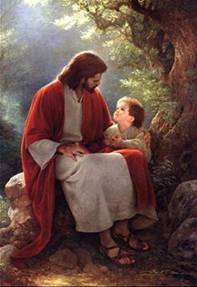
The inner meaning of Christ’s Teaching was that the earthly world is a temporary world, that is why we should prepare ourselves for the transition into the New World, the Divine World, which is the genuine home, from which human beings, the sons and daughters of God have come and where they will go back. “I am the good shepherd, and I know the Path home.”
The path to God is an inner Path. To open up that Path was the Mission, the inner Teaching of Christ. Christ had come to show the Path and become an example of how each of us can follow that Path. “Whoever believes in me will also do the works that I have been doing.” (John 14:12). In order to enter the Divine world, one must get rid of the carnal, mortal being and put on the spiritual being. In other words, one must attain the level of Christ Consciousness, which is the intermediary between the lower consciousness of the carnal mind and the higher Divine Consciousness. This inner Teaching of Christ had been replaced by the false Teaching about the only Son of God, and the cult of worshiping Christ was created.
The only Path to God is to learn God’s Laws and begin to create Perfection in the name of the common good and brotherhood on Earth.
One of Christ’s tasks was to prove the immortal nature of the human spirit. He powerfully proved that knowledge by His resurrection in the subtle body after His physical death. “When talking about his resurrection, Christ did not have in mind his conscious passing into the Subtle World, but actually his appearance in a subtle body amidst physical conditions. Of course, such an appearance of the physically dead person in the materialized subtle body was striking proof of His resurrection and thus strengthened the disciples’ faith in His Teaching.” (Letters of Helena Roerich, Volume II). The rising from the death inspired people and convinced them in the truthfulness of Christ’s Teachings more than any other arguments. “The phenomenon of the materialization of the subtle body of the Teacher strengthened the belief of the disciples in the reality of the Invisible World. Not all of them were able to perceive the essence of that world, but the window had at least been opened to a certain degree.” (Supermundane, Book I, 172).
Leaving the earthly plane, the Great Master voluntarily took on the great suffering, in order to embody with His sacrifice His Teachings of Love and Service to all people of Earth. The Son of Man had specifically come on Earth in order to serve the people. “Greater love has no one than this: to lay down one’s life for one’s friends.” (John 15:13). Christ imprinted this Teaching of Love that he brought by His blood, and by the act of Great Sacrifice he imprinted the strength of Spirit over the physical matter of body and the immortality of the spirit.
Adapted from the book “The Great Moralists – the Founders of World Religions” by Valentina Polyan
(Omsk; Publishing House “Sirius,” 2009, Russian version)
.
Prepared by Elena Ilyina
[1] Jesus is the Greek form of the Jewish name Jeshua or Yeshua.
[2] In the modern Bible versions only one meaning of the Magi is given – the meaning of wise men. In the original version, the word “magicians” was used.
[3] One of Saint Germain’s incarnations.
[4] Christ was called by this name in the book “Supermundane, The Inner Life,” Book 1, 1938. Published by Agni Yoga Society)
[5] The Council was the supreme court of the highest priests of Judah, which consisted of 72 members, primarily of the Pharisee or Sadducee sects, with pontiff being the chair.
[6] Pontius Pilate – the Roman governor, or the Procurator of Judea.
[7] Herod Antipas – one of the Roman deputies, he had a formal title of the King.
|